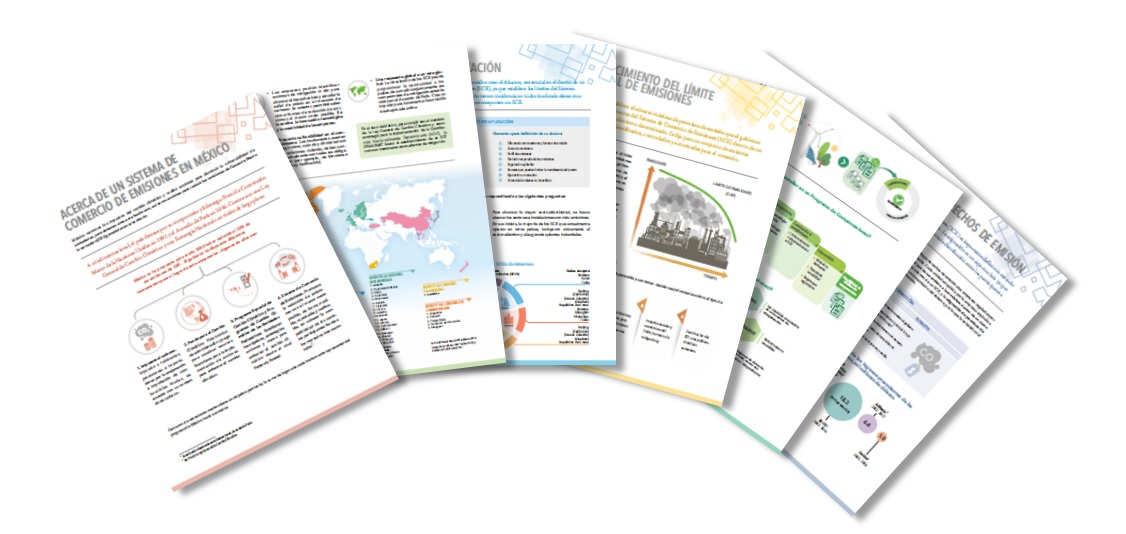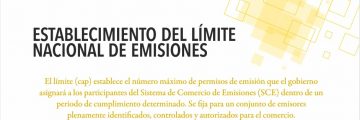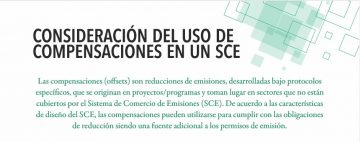Aiming to improve the understanding regarding the design and operation of an Emissions Trading System (ETS) in Mexico, the project “Preparation of an Emissions Trading System in Mexico” (SiCEM) publishes a brand-new set of factsheets covering the key technical design elements relevant for an ETS.
In consideration of the forthcoming pilot phase of the Mexican ETS set to begin in 2019, the GIZ project “Preparation of an Emissions Trading System in Mexico” (SiCEM) has been conducting a series of activities which include the development and dissemination of relevant information regarding an ETS. The purpose is to support the understanding of the key elements involved in ETS design and implementation.

To address the functioning of an ETS in a detailed and straightforward way, a series of factsheets have been developed, using as a reference information from renown sources like the International Carbon Action Partnership (ICAP), the Partnership for Market Readiness (PMR) and the International Emissions Trading Association (IETA), as well as practical lessons learnt from several jurisdictions with experience implementing an ETS, such as the European Union and the State of California. Also, the insights resulting from the studies commissioned by GIZ regarding the technical aspects of an ETS and its implementation in Mexico have been incorporated into the factsheets.
An ETS is a market instrument which may be implemented by governments as a way to control Greenhouse Gases (GHG) emissions and mitigate climate change, by establishing a cap on emissions and ensuring the country will achieve its mitigation targets. It is considered a flexible and cost-effective instrument, since participants –GHG emitting entities– will decide on the best way to comply with the allowed emissions: they can either perform mitigation actions within the installation or buy emission allowances from other participants. Globally, more than 30 jurisdictions have implemented, scheduled, or are considering an ETS; for example, the European Union, the State of California, China or South Korea.
The design of an ETS involves a number of design steps critical to obtaining a robust and cost-effective mitigation instrument. Decisions must be taken regarding the sectors covered, the minimum size of the emitting installations to which the emissions cap will be applied, the type and size of the cap, and the method for allocating the emissions allowances (or permits to emit) to the different installations. Other important aspects include monitoring and evaluation of emissions within the system, flexibility mechanisms to allow emissions reductions from economic sectors not covered by the ETS (e.g. the forestry sector) to be used for compliance in the system, temporal flexibility mechanisms which give liquidity to the market, price control mechanisms and linking ETS across jurisdictions to increase the size of the market and decrease overall compliance costs.
The present factsheets cover some of the key design elements of an ETS: scope, threshold, cap, allowance allocation and flexibility mechanisms. Further information regarding temporal flexibility, monitoring and verification of emissions, linking systems across jurisdictions and continuous improvement will be covered in a second batch of factsheets to be published in the “IKI-Alliance Mexico” blog in the coming months.
For more information, please contact us at: Comercio.Emisiones-MX[AT]giz.de
Click on the images below to download the publications (in spanish):






